Gluten-free labelling

In 2009, the European Commission introduced compositional and labelling standards [1] that set levels of gluten for foods labelled as either ‘gluten free’ or ‘very low gluten’.
These standards were designed to help protect the long-term health of people with coeliac disease. The levels of gluten permitted are based on recognised scientific evidence and are as follows:
All foods including specialist substitute products such as gluten-free breads and flours which may contain gluten-free wheat starch, can be labelled as ‘gluten free’ providing they meet the established compositional requirements associated with the labelling claim. The ‘gluten free’ label may also be used for uncontaminated oat products that meet the gluten-free standard (i.e. ≤20ppm).
It is important to note that only foods containing cereal ingredients which have been specially processed to reduce the level of gluten can make a ‘very low gluten’ claim.
This regulation applies to all foods (both pre-packed and loose) sold in a variety of outlets including shops and catering establishments.
- ‘gluten free’- 20 parts per million (ppm) of gluten or less
- ‘very low gluten’- 21-100ppm of gluten
All foods including specialist substitute products such as gluten-free breads and flours which may contain gluten-free wheat starch, can be labelled as ‘gluten free’ providing they meet the established compositional requirements associated with the labelling claim. The ‘gluten free’ label may also be used for uncontaminated oat products that meet the gluten-free standard (i.e. ≤20ppm).
It is important to note that only foods containing cereal ingredients which have been specially processed to reduce the level of gluten can make a ‘very low gluten’ claim.
This regulation applies to all foods (both pre-packed and loose) sold in a variety of outlets including shops and catering establishments.
European Regulation 41/2009
Download: European Regulation 41/2009 on compositional and labelling of foodstuffs suitable for people intolerant to gluten
Allergen Labelling
In December 2014, the rules around allergen labelling changed following the implementation of a new European Regulation - the ‘Food Information for Consumers’ Regulation [2] (EU No. 1169/2011).
Whilst this piece of legislation builds on the previous piece of allergen labelling legislation, there were a number of changes which are outlined below:
Whilst this piece of legislation builds on the previous piece of allergen labelling legislation, there were a number of changes which are outlined below:
- The presence of any allergens within a product must be emphasised in the ingredients list so the consumer can easily identify them, for example, by highlighting, underling or by listing them in bold.
- Information on allergens included within the product must be situated in one place on the food label. This means that the ‘Allergy Advice’ and ‘Contains’ boxes which were common are no longer allowed.
- Previously, loose foods (those not packaged) did not have to comply with the food allergen labelling requirements; they now have to by law.
Allergens
The 14 allergens that must be labelled if they are included in a product are:
- Eggs
- Milk
- Fish
- Crustaceans
- Molluscs
- Peanuts
- Tree Nuts (namely almonds, hazelnuts, walnuts, cashews, pecans, brazils, pistachios, macademia nuts or Queensland nuts)
- Sesame seeds
- Cereals containing gluten (namely wheat, rye, barley and oats)
- Soya
- Celery and celeriac
- Mustard
- Lupin
- Sulphur dioxide and sulphites (at a concentration of more than 10 parts per million)
Advisory Labelling
Manufacturers frequently use statements such as ‘May contain’ to show that there could be small amounts of an allergen in a food product caused by cross contamination during production. However, it is important to be aware that it is not a legal requirement to say that a food might accidentally contain a small amount of an allergen.
There are a number of different statements which manufacturers use on pack to warn of allergen cross contamination such as ‘May contain x’, ‘Made in a factory that also handles x’ etc. These statements are simply meant to provide the consumer with information on how the risk arises as opposed to the severity of the risk.
There are a number of different statements which manufacturers use on pack to warn of allergen cross contamination such as ‘May contain x’, ‘Made in a factory that also handles x’ etc. These statements are simply meant to provide the consumer with information on how the risk arises as opposed to the severity of the risk.
References
- Commission Regulation (EC) No. 41/2009 concerning the composition and labelling of foodstuffs suitable for people intolerant to gluten
- Regulation (EU) No 1169/2011 on the Provision of Food Information to Consumers
Further information on this topic
Professional articles
5
Show all
Presentations
8
Show all
Studies
4
Show all

Gut Microbiota in Health and Disease
As new evidence and better analytical techniques emerge, more information is becoming available about our gut bacteria. It is becoming clear that the type and relative amount of bacteria present in our gut plays an important role in both health and disease.
>> Read more... <<<
>> Read more... <<<

The Influence of the Microbiome on Gluten-Related Disorders
This short article provides an overview of the differences in microbiota which exist in gluten-related disorders, with a particular focus on coeliac disease. It goes on to outline a planned controlled prospective study which examines changes in intestinal microflora in patients with wheat sensitivity.
>> Read more... <<<
>> Read more... <<<

The importance of the microbiota in the pathogenesis and treatment of coeliac disease
The importance of intestinal microbiota and role of probiotics is well documented in some clinical scenarios and conditions, for example, antibiotic-associated diarrhoea, irritable bowel syndrome. However, there are currently few studies on the relationship between coeliac disease and microbiota. This article looks to address and summarise the current knowledge base within this specific area.
>> Read more... <<<
>> Read more... <<<
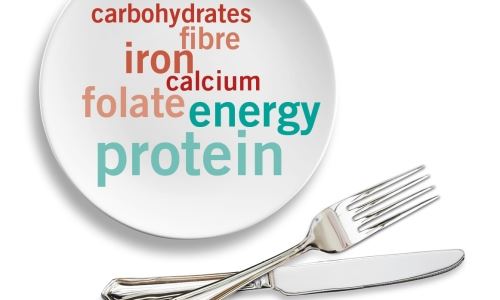
Nutritional adequacy of a Gluten-Free Diet
Research into the nutritional adequacy of a gluten-free diet is limited. This article looks at an ongoing Italian study with the aim of understanding more about the nutritional quality of a gluten-free diet.
>> Read more... <<<
>> Read more... <<<

Dietary adherence and the gluten-free diet
This short article looks at the issues surrounding adherence to a gluten-free diet and effect on quality of life in coeliac patients.
>> Read more... <<<
>> Read more... <<<

Gut Microbiota in Health and Disease
As new evidence and better analytical techniques emerge, more informat...

The Influence of the Microbiome on Gluten-Related Disorders
This short article provides an overview of the differences in microbio...

The importance of the microbiota in the pathogenesis and treatment of coeliac disease
The importance of intestinal microbiota and role of probiotics is well...

Nutritional adequacy of a Gluten-Free Diet
Research into the nutritional adequacy of a gluten-free diet is limite...

Dietary adherence and the gluten-free diet
This short article looks at the issues surrounding adherence to a glut...
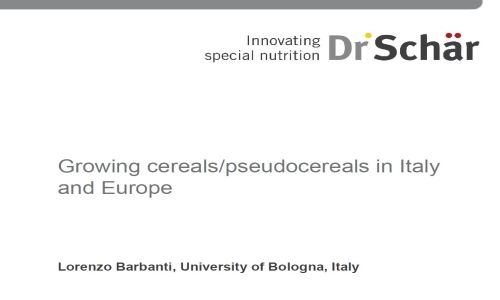
Growing cereals/pseudocereals in Italy and Europe (2013)
Lorenzo Barbanti
Assistant Professor
DipSA (Department of Agricultural Sciences)
University of Bologna, Italy
International Symposium "10 years of research in gluten-free food and future prospects", 30.11.2013, AREA Science Park, Trieste (Italy)
Assistant Professor
DipSA (Department of Agricultural Sciences)
University of Bologna, Italy
International Symposium "10 years of research in gluten-free food and future prospects", 30.11.2013, AREA Science Park, Trieste (Italy)
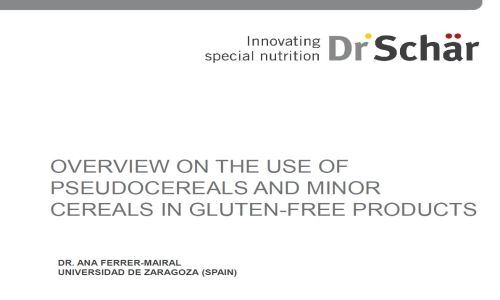
Overview on the use of pseudocereals and minor cereals in gluten - free products (2013)
Ana Ferrer-Mairal
Associate Professor in Food Technology
University of Zaragoza, Spain
International Symposium "10 years of research in gluten-free food and future prospects", 30.11.2013, AREA Science Park, Trieste (Italy)
Associate Professor in Food Technology
University of Zaragoza, Spain
International Symposium "10 years of research in gluten-free food and future prospects", 30.11.2013, AREA Science Park, Trieste (Italy)
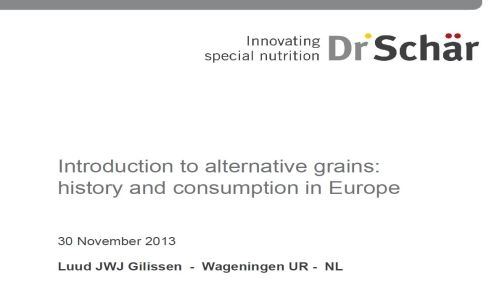
Introduction to alternative grains: history and consumption in Europe (2013)
Luud J.W.J. Gilissen
Senior scientist at Plant Research International (PRI) of Wageningen UR, The Netherlands
International Symposium "10 years of research in gluten-free food and future prospects", 30.11.2013, AREA Science Park, Trieste (Italy)
Senior scientist at Plant Research International (PRI) of Wageningen UR, The Netherlands
International Symposium "10 years of research in gluten-free food and future prospects", 30.11.2013, AREA Science Park, Trieste (Italy)
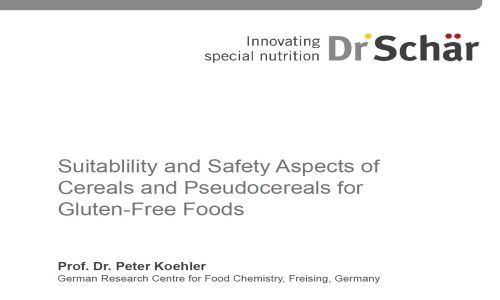
Suitability and safety aspects of cereals and pseudocereals for gluten-free foods (2013)
Peter Koehler
Professor for Food Chemistry
Technical University of Munich, Germany
Vice director of the German Research Centre for Food Chemistry
International Symposium "10 years of research in gluten-free food and future prospects", 30.11.2013, AREA Science Park, Trieste (Italy)
Professor for Food Chemistry
Technical University of Munich, Germany
Vice director of the German Research Centre for Food Chemistry
International Symposium "10 years of research in gluten-free food and future prospects", 30.11.2013, AREA Science Park, Trieste (Italy)
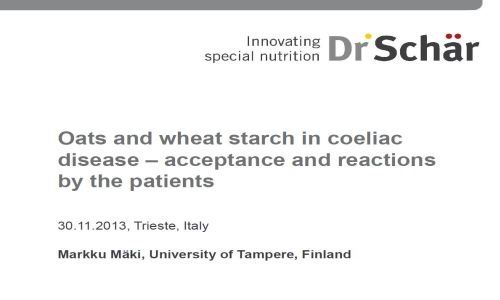
Oats and wheat starch in coeliac disease – acceptance and reactions by patients (2013)
Markku Mäki
Pediatric gastroenterologist and full Professor of Pediatrics at the University of Tampere, Finland
International Symposium "10 years of research in gluten-free food and future prospects", 30.11.2013, AREA Science Park, Trieste (Italy)
Pediatric gastroenterologist and full Professor of Pediatrics at the University of Tampere, Finland
International Symposium "10 years of research in gluten-free food and future prospects", 30.11.2013, AREA Science Park, Trieste (Italy)
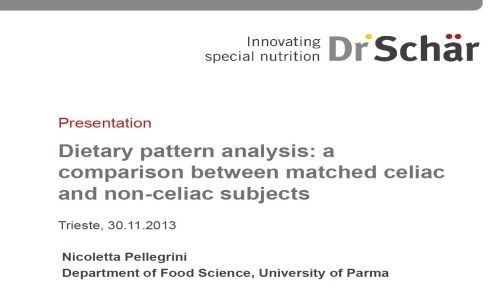
Dietary pattern analysis: a comparison between matched celiac and non-celiac subjects (2013)
Nicoletta Pellegrini
Associate Professor
Department of Food Science, University of Parma, Italy
International Symposium "10 years of research in gluten-free food and future prospects", 30.11.2013, AREA Science Park, Trieste (Italy)
Associate Professor
Department of Food Science, University of Parma, Italy
International Symposium "10 years of research in gluten-free food and future prospects", 30.11.2013, AREA Science Park, Trieste (Italy)
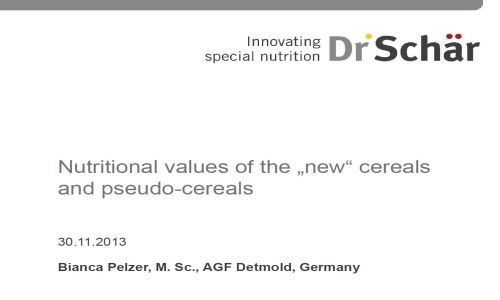
Nutritional values of the „new“ cereals and pseudocereals (2013)
Bianca Pelzer
Association of Cereal Research (AGF)
Detmold, Germany
International Symposium "10 years of research in gluten-free food and future prospects", 30.11.2013, AREA Science Park, Trieste (Italy)
Association of Cereal Research (AGF)
Detmold, Germany
International Symposium "10 years of research in gluten-free food and future prospects", 30.11.2013, AREA Science Park, Trieste (Italy)
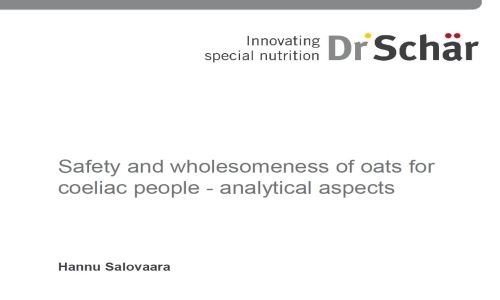
Safety and wholesomeness of oats for coeliac people - analytical aspects (2013)
Hannu Salovaara
Head of Food Technology division
Food and Environmental Sciences, University of Helsinki, Finland
International Symposium "10 years of research in gluten-free food and future prospects", 30.11.2013, AREA Science Park, Trieste (Italy)
Head of Food Technology division
Food and Environmental Sciences, University of Helsinki, Finland
International Symposium "10 years of research in gluten-free food and future prospects", 30.11.2013, AREA Science Park, Trieste (Italy)

Growing cereals/pseudocereals in Italy and Europe (2013)
Lorenzo Barbanti
Assistant Professor
DipSA (Department of Agricultur...

Overview on the use of pseudocereals and minor cereals in gluten - free products (2013)
Ana Ferrer-Mairal
Associate Professor in Food Technology
University ...

Introduction to alternative grains: history and consumption in Europe (2013)
Luud J.W.J. Gilissen
Senior scientist at Plant Research International...

Suitability and safety aspects of cereals and pseudocereals for gluten-free foods (2013)
Peter Koehler
Professor for Food Chemistry
Technical University of M...

Oats and wheat starch in coeliac disease – acceptance and reactions by patients (2013)
Markku Mäki
Pediatric gastroenterologist and full Professor of Pediat...

Dietary pattern analysis: a comparison between matched celiac and non-celiac subjects (2013)
Nicoletta Pellegrini
Associate Professor
Department of Food Science,...

Nutritional values of the „new“ cereals and pseudocereals (2013)
Bianca Pelzer
Association of Cereal Research (AGF)
Detmold, Germany
...

Safety and wholesomeness of oats for coeliac people - analytical aspects (2013)
Hannu Salovaara
Head of Food Technology division
Food and Environmen...
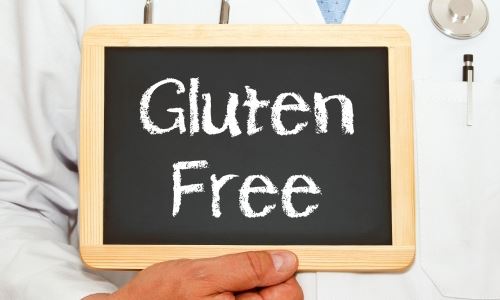
Glycaemic index of some commercial gluten-free foods
ABSTRACT
Purpose
Gluten-free products present major challenges for the food industry in terms of organoleptic, technological and nutritional characteristics. The absence of gluten has been shown to affect starch digestibility, thus increasing the postprandial glycaemic response. However, in recent years, gluten-free technologies have been improved, thus possibly modifying this quality parameter. We investigated the glycaemic index (GI) of 10 commercial foods aiming to update the GI values of the most common gluten-free products consumed in Italy.
Methods
The in vivo GI was evaluated for six bakery products and four types of pasta. The postprandial glucose response was obtained in two groups with 10 healthy volunteers each.
Results
The overall GI values ranged from 37.5 for breakfast biscuits to 66.7 for puffed multigrain cake. Breads and pasta had GI values consistently lower than those previously reported in the literature.
Conclusion
The present study showed that several commercial GF products exhibited low and medium GI values, not confirming the previous observations on the high GI of GF. However, considering the multiple formulations and processes for preparation of these products, further studies are recommended.
Resource: Eur J Nutr. 2014 Oct 17.
Francesca Scazzina • Margherita Dall’Asta • Nicoletta Pellegrini • Furio Brighenti
Purpose
Gluten-free products present major challenges for the food industry in terms of organoleptic, technological and nutritional characteristics. The absence of gluten has been shown to affect starch digestibility, thus increasing the postprandial glycaemic response. However, in recent years, gluten-free technologies have been improved, thus possibly modifying this quality parameter. We investigated the glycaemic index (GI) of 10 commercial foods aiming to update the GI values of the most common gluten-free products consumed in Italy.
Methods
The in vivo GI was evaluated for six bakery products and four types of pasta. The postprandial glucose response was obtained in two groups with 10 healthy volunteers each.
Results
The overall GI values ranged from 37.5 for breakfast biscuits to 66.7 for puffed multigrain cake. Breads and pasta had GI values consistently lower than those previously reported in the literature.
Conclusion
The present study showed that several commercial GF products exhibited low and medium GI values, not confirming the previous observations on the high GI of GF. However, considering the multiple formulations and processes for preparation of these products, further studies are recommended.
Resource: Eur J Nutr. 2014 Oct 17.
Francesca Scazzina • Margherita Dall’Asta • Nicoletta Pellegrini • Furio Brighenti

Diets that differ in their FODMAP content alter the colonic luminal microenvironment.
Abstract
OBJECTIVE:
A low FODMAP (Fermentable Oligosaccharides, Disaccharides, Monosaccharides And Polyols) diet reduces symptoms of IBS, but reduction of potential prebiotic and fermentative effects might adversely affect the colonic microenvironment. The effects of a low FODMAP diet with a typical Australian diet on biomarkers of colonic health were compared in a single-blinded, randomised, cross-over trial.
DESIGN:
Twenty-seven IBS and six healthy subjects were randomly allocated one of two 21-day provided diets, differing only in FODMAP content (mean (95% CI) low 3.05 (1.86 to 4.25) g/day vs Australian 23.7 (16.9 to 30.6) g/day), and then crossed over to the other diet with ≥21-day washout period. Faeces passed over a 5-day run-in on their habitual diet and from day 17 to day 21 of the interventional diets were pooled, and pH, short-chain fatty acid concentrations and bacterial abundance and diversity were assessed.
RESULTS:
Faecal indices were similar in IBS and healthy subjects during habitual diets. The low FODMAP diet was associated with higher faecal pH (7.37 (7.23 to 7.51) vs 7.16 (7.02 to 7.30); p=0.001), similar short-chain fatty acid concentrations, greater microbial diversity and reduced total bacterial abundance (9.63 (9.53 to 9.73) vs 9.83 (9.72 to 9.93) log10 copies/g; p<0.001) compared with the Australian diet. To indicate direction of change, in comparison with the habitual diet the low FODMAP diet reduced total bacterial abundance and the typical Australian diet increased relative abundance for butyrate-producing Clostridium cluster XIVa (median ratio 6.62; p<0.001) and mucus-associated Akkermansia muciniphila (19.3; p<0.001), and reduced Ruminococcus torques.
CONCLUSIONS:
Diets differing in FODMAP content have marked effects on gut microbiota composition. The implications of long-term reduction of intake of FODMAPs require elucidation.
Resource: Gut. 2014 Jul 12. pii: gutjnl-2014-307264. doi: 10.1136/gutjnl-2014-307264. [Epub ahead of print]
Halmos EP, Christophersen CT, Bird AR, Shepherd SJ, Gibson PR, Muir JG.
OBJECTIVE:
A low FODMAP (Fermentable Oligosaccharides, Disaccharides, Monosaccharides And Polyols) diet reduces symptoms of IBS, but reduction of potential prebiotic and fermentative effects might adversely affect the colonic microenvironment. The effects of a low FODMAP diet with a typical Australian diet on biomarkers of colonic health were compared in a single-blinded, randomised, cross-over trial.
DESIGN:
Twenty-seven IBS and six healthy subjects were randomly allocated one of two 21-day provided diets, differing only in FODMAP content (mean (95% CI) low 3.05 (1.86 to 4.25) g/day vs Australian 23.7 (16.9 to 30.6) g/day), and then crossed over to the other diet with ≥21-day washout period. Faeces passed over a 5-day run-in on their habitual diet and from day 17 to day 21 of the interventional diets were pooled, and pH, short-chain fatty acid concentrations and bacterial abundance and diversity were assessed.
RESULTS:
Faecal indices were similar in IBS and healthy subjects during habitual diets. The low FODMAP diet was associated with higher faecal pH (7.37 (7.23 to 7.51) vs 7.16 (7.02 to 7.30); p=0.001), similar short-chain fatty acid concentrations, greater microbial diversity and reduced total bacterial abundance (9.63 (9.53 to 9.73) vs 9.83 (9.72 to 9.93) log10 copies/g; p<0.001) compared with the Australian diet. To indicate direction of change, in comparison with the habitual diet the low FODMAP diet reduced total bacterial abundance and the typical Australian diet increased relative abundance for butyrate-producing Clostridium cluster XIVa (median ratio 6.62; p<0.001) and mucus-associated Akkermansia muciniphila (19.3; p<0.001), and reduced Ruminococcus torques.
CONCLUSIONS:
Diets differing in FODMAP content have marked effects on gut microbiota composition. The implications of long-term reduction of intake of FODMAPs require elucidation.
Resource: Gut. 2014 Jul 12. pii: gutjnl-2014-307264. doi: 10.1136/gutjnl-2014-307264. [Epub ahead of print]
Halmos EP, Christophersen CT, Bird AR, Shepherd SJ, Gibson PR, Muir JG.
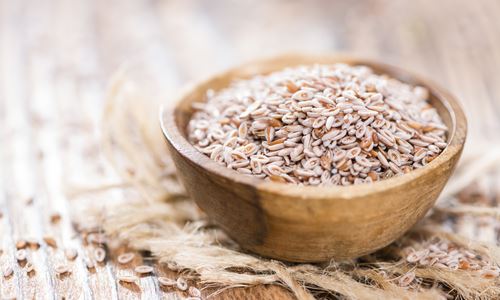
Psyllium as a substitute for gluten in pastas
Abstract
The aim of the present study was to evaluate the effect of replacing gluten in favor of psyllium in pasta’s characteristics. This study takes an exploratory and quantitative approach and was sub-divided into four steps: selection and development of recipes and chemical and sensorial analysis. Modified samples of the pasta presented 100.0% of acceptance for individuals with celiac disease and up to 94.0% for individuals without celiac disease. The most affected characteristics were odor and texture. In terms of chemical composition, reduction of energy value was 26.5% and of proportional fat was 85.4% before being cooked. Substituting wheat flour for a mixture of gluten-free flours with psyllium did not alter preference or acceptability of modified products in relation to standardized ones and amplified feeding options for celiac disease patients. Thus, there were no damages in sensorial characteristics of these products.
Resource: Journal of Culinary Science & Technology Volume 12, Issue 2, 2014
Renata Puppin Zandonadi, Raquel Braz Assunção Botelho and Wilma Maria Coelho Araújo
The aim of the present study was to evaluate the effect of replacing gluten in favor of psyllium in pasta’s characteristics. This study takes an exploratory and quantitative approach and was sub-divided into four steps: selection and development of recipes and chemical and sensorial analysis. Modified samples of the pasta presented 100.0% of acceptance for individuals with celiac disease and up to 94.0% for individuals without celiac disease. The most affected characteristics were odor and texture. In terms of chemical composition, reduction of energy value was 26.5% and of proportional fat was 85.4% before being cooked. Substituting wheat flour for a mixture of gluten-free flours with psyllium did not alter preference or acceptability of modified products in relation to standardized ones and amplified feeding options for celiac disease patients. Thus, there were no damages in sensorial characteristics of these products.
Resource: Journal of Culinary Science & Technology Volume 12, Issue 2, 2014
Renata Puppin Zandonadi, Raquel Braz Assunção Botelho and Wilma Maria Coelho Araújo

A Diet Low in FODMAPs Reduces Symptoms of Irritable Bowel Syndrome
Abstract
Background & Aims: A diet low in fermentable oligosaccharides, disaccharides, monosaccharides, and polyols (FODMAPs) often is used to manage functional gastrointestinal symptoms in patients with irritable bowel syndrome (IBS), yet there is limited evidence of its efficacy, compared with a normal Western diet. We investigated the effects of a diet low in FODMAPs compared with an Australian diet, in a randomized, controlled, single-blind, cross-over trial of patients with IBS.
Methods: In a study of 30 patients with IBS and 8 healthy individuals (controls, matched for demographics and diet), we collected dietary data from subjects for 1 habitual week. Participants then randomly were assigned to groups that received 21 days of either a diet low in FODMAPs or a typical Australian diet, followed by a washout period of at least 21 days, before crossing over to the alternate diet. Daily symptoms were rated using a 0- to 100-mm visual analogue scale. Almost all food was provided during the interventional diet periods, with a goal of less than 0.5 g intake of FODMAPs per meal for the low-FODMAP diet. All stools were collected from days 17–21 and assessed for frequency, weight, water content, and King's Stool Chart rating.
Results: Subjects with IBS had lower overall gastrointestinal symptom scores (22.8; 95% confidence interval, 16.7–28.8 mm) while on a diet low in FODMAPs, compared with the Australian diet (44.9; 95% confidence interval, 36.6–53.1 mm; P < .001) and the subjects' habitual diet. Bloating, pain, and passage of wind also were reduced while IBS patients were on the low-FODMAP diet. Symptoms were minimal and unaltered by either diet among controls. Patients of all IBS subtypes had greater satisfaction with stool consistency while on the low-FODMAP diet, but diarrhea-predominant IBS was the only subtype with altered fecal frequency and King's Stool Chart scores.
Conclusions: In a controlled, cross-over study of patients with IBS, a diet low in FODMAPs effectively reduced functional gastrointestinal symptoms. This high-quality evidence supports its use as a first-line therapy.
Resource: Gastroenterology Volume 146, Issue 1 , Pages 67-75.e5, January 2014
Emma P. Halmos, Victoria A. Power, Susan J. Shepherd, Peter R. Gibson, Jane G. Muir
Background & Aims: A diet low in fermentable oligosaccharides, disaccharides, monosaccharides, and polyols (FODMAPs) often is used to manage functional gastrointestinal symptoms in patients with irritable bowel syndrome (IBS), yet there is limited evidence of its efficacy, compared with a normal Western diet. We investigated the effects of a diet low in FODMAPs compared with an Australian diet, in a randomized, controlled, single-blind, cross-over trial of patients with IBS.
Methods: In a study of 30 patients with IBS and 8 healthy individuals (controls, matched for demographics and diet), we collected dietary data from subjects for 1 habitual week. Participants then randomly were assigned to groups that received 21 days of either a diet low in FODMAPs or a typical Australian diet, followed by a washout period of at least 21 days, before crossing over to the alternate diet. Daily symptoms were rated using a 0- to 100-mm visual analogue scale. Almost all food was provided during the interventional diet periods, with a goal of less than 0.5 g intake of FODMAPs per meal for the low-FODMAP diet. All stools were collected from days 17–21 and assessed for frequency, weight, water content, and King's Stool Chart rating.
Results: Subjects with IBS had lower overall gastrointestinal symptom scores (22.8; 95% confidence interval, 16.7–28.8 mm) while on a diet low in FODMAPs, compared with the Australian diet (44.9; 95% confidence interval, 36.6–53.1 mm; P < .001) and the subjects' habitual diet. Bloating, pain, and passage of wind also were reduced while IBS patients were on the low-FODMAP diet. Symptoms were minimal and unaltered by either diet among controls. Patients of all IBS subtypes had greater satisfaction with stool consistency while on the low-FODMAP diet, but diarrhea-predominant IBS was the only subtype with altered fecal frequency and King's Stool Chart scores.
Conclusions: In a controlled, cross-over study of patients with IBS, a diet low in FODMAPs effectively reduced functional gastrointestinal symptoms. This high-quality evidence supports its use as a first-line therapy.
Resource: Gastroenterology Volume 146, Issue 1 , Pages 67-75.e5, January 2014
Emma P. Halmos, Victoria A. Power, Susan J. Shepherd, Peter R. Gibson, Jane G. Muir

Glycaemic index of some commercial gluten-free foods
ABSTRACT
Purpose
Gluten-free products present major challenges for...

Diets that differ in their FODMAP content alter the colonic luminal microenvironment.
Abstract
OBJECTIVE:
A low FODMAP (Fermentable Oligosaccharides, Di...

Psyllium as a substitute for gluten in pastas
Abstract
The aim of the present study was to evaluate the effect of...

A Diet Low in FODMAPs Reduces Symptoms of Irritable Bowel Syndrome
Abstract
Background & Aims: A diet low in fermentable oligosacchari...
www.drschaer-institute.com
